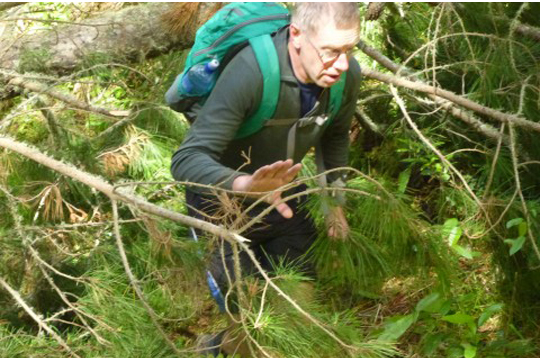Taking the bait
After a weekend doing ground-based pest control, I can better appreciate the value of aerial 1080. 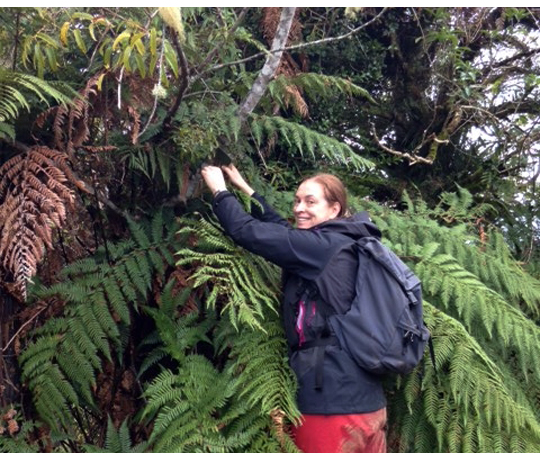
I slid down a muddy bank with nothing to grab but a soggy tree fern stump that lifted from the soil like a mushroom. Through the rain and the supplejack lassoes I could see Ian and Merryl a few metres ahead. If they could hang on to the hillside, so could I.
And in truth I probably wouldn’t have died if I’d tumbled 20 metres into the stream below. Though it wouldn’t have been a good look.
Ian Flux and Merryl Park are as nimble as goats. They’ve skipped across hundreds of hillsides far trickier than this one in Mapara forest, near Pureora.
We were in central North Island kokako country and our job was to rid the forest of rats before they had a chance to feast on kokako eggs or chicks. We were the advance party of a rat control programme that kokako scientist Ian is rolling out on private land. Neighbouring DOC forest has pest control but the endangered kokako found there venture further afield so Ian is extending their pest-controlled haven.
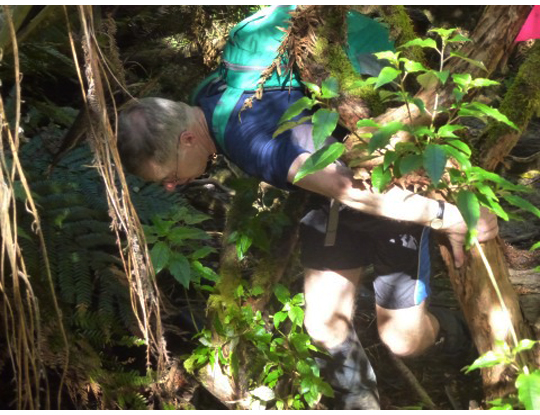 We had to staple to trees 50 metres apart small paper bags of cereal pellets for rats. The first afternoon four groups of Hutt Valley Tramping Club members worked across the hillside, each following a different line on a GPS screen. It should have been a doddle for anyone who likes to get outdoors and who can work a couple of buttons on a handheld GPS unit.
We had to staple to trees 50 metres apart small paper bags of cereal pellets for rats. The first afternoon four groups of Hutt Valley Tramping Club members worked across the hillside, each following a different line on a GPS screen. It should have been a doddle for anyone who likes to get outdoors and who can work a couple of buttons on a handheld GPS unit.
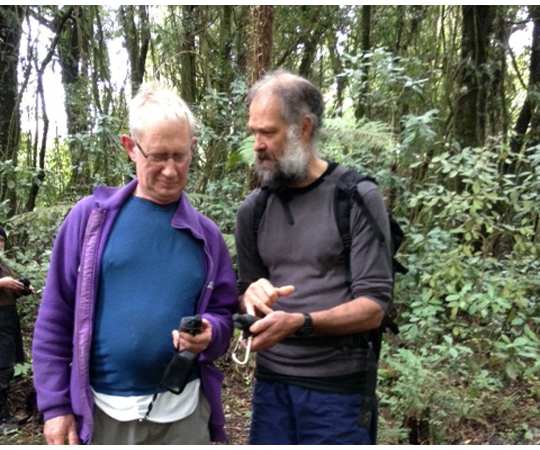 This is the jolly alternative to dropping 1080 from the air, according to some. Kit out a directionless unemployed person with a GPS, some bait and a good raincoat, send him or her into our back country and our pest problems will be solved. Sounds simple.
This is the jolly alternative to dropping 1080 from the air, according to some. Kit out a directionless unemployed person with a GPS, some bait and a good raincoat, send him or her into our back country and our pest problems will be solved. Sounds simple.
And so it would be in a nice flat piece of forest – one not intersected by streams or steep gullies and without boulders or vines or inconveniently placed tawa trees.
Following a GPS line in terrain like our Mapara hillside was not like the usual tramping I do. Not only was there no track, there wasn’t even the option of taking the easiest route through the forest. We needed to stick as closely as possible to the GPS line to evenly space the cereal baits through the forest. Rats have small territories and we wanted them all to have a paper bag of pellets to sample.
Our cereal pellets were like the ones you’d feed a guinea pig. They were flavoured with cinnamon, which birds and insects don’t like, but they didn’t contain any poison.
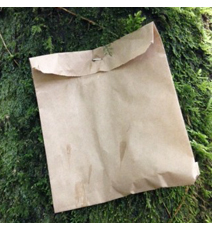
Rats are notoriously wary of new food. They can’t vomit so they will nibble only a tiny amount of a new food to be sure it won’t make them sick.
Our paper bags of bait were put out to introduce the rats to a new food. A month later Ian led a second team of trampers to put out another series of paper bags, this time filled with bait laced with cholecalciferol and pindone toxins. The rats would this time tuck in to the familiar cereal pellets and swallow a lethal dose of poison.
After a lot of planning and hard work by volunteers – and a bit of luck – the rat numbers in this patch of Mapara forest should be low enough to give a few kokako pairs the chance to raise some chicks this summer.
Finally caught up with Ian and Merryl – well, they waited – before we made our final, steep climb out of the forest.
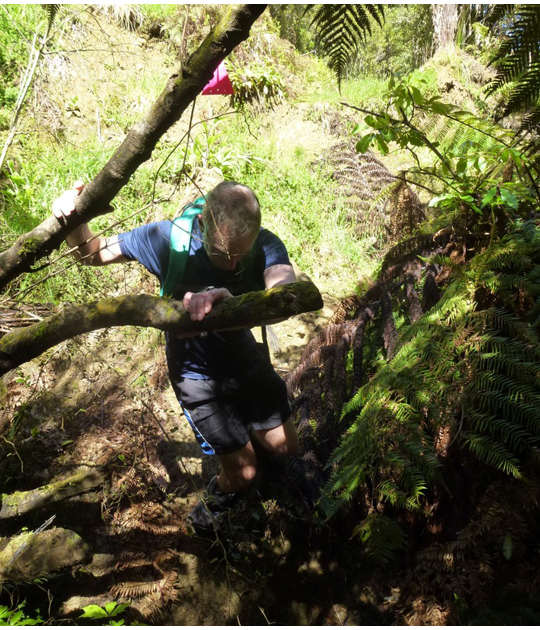 Some people might wonder how I contributed to the pest control expedition to create a haven for kokako. I didn’t. I succeeded in not falling into the stream and not getting hurt. Baits and GPS co-ordinates were peripheral features for me.
Some people might wonder how I contributed to the pest control expedition to create a haven for kokako. I didn’t. I succeeded in not falling into the stream and not getting hurt. Baits and GPS co-ordinates were peripheral features for me.
Bring on the aerial 1080.
Photos show Marina, Ian Flux, John Simes and Andrew Robinson. Photos by Marina and Michele Lythgoe.

